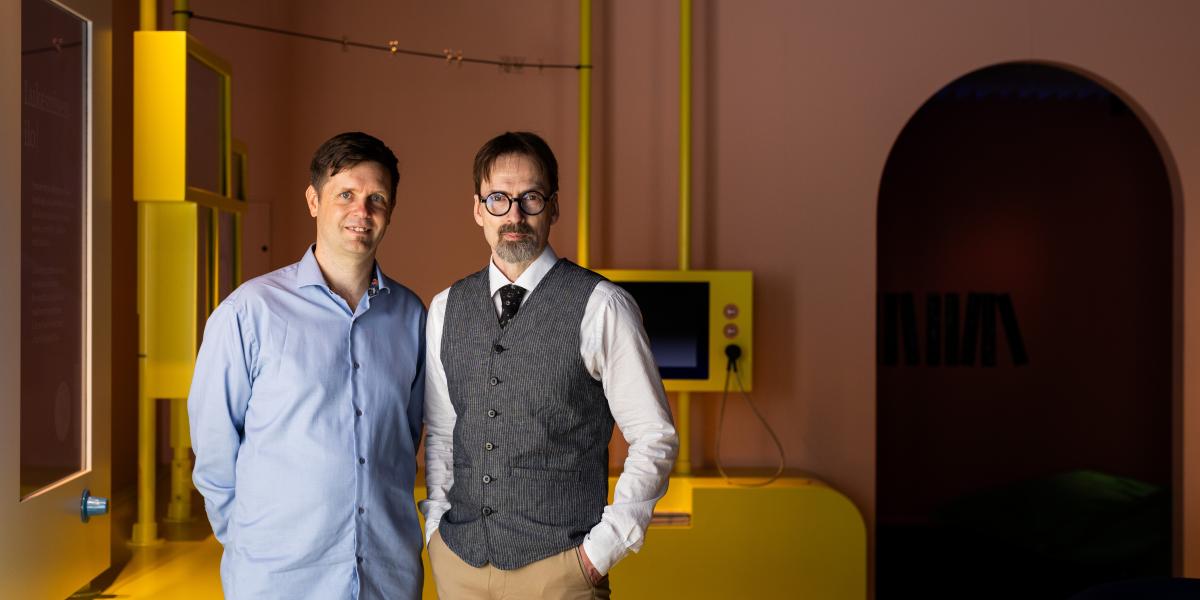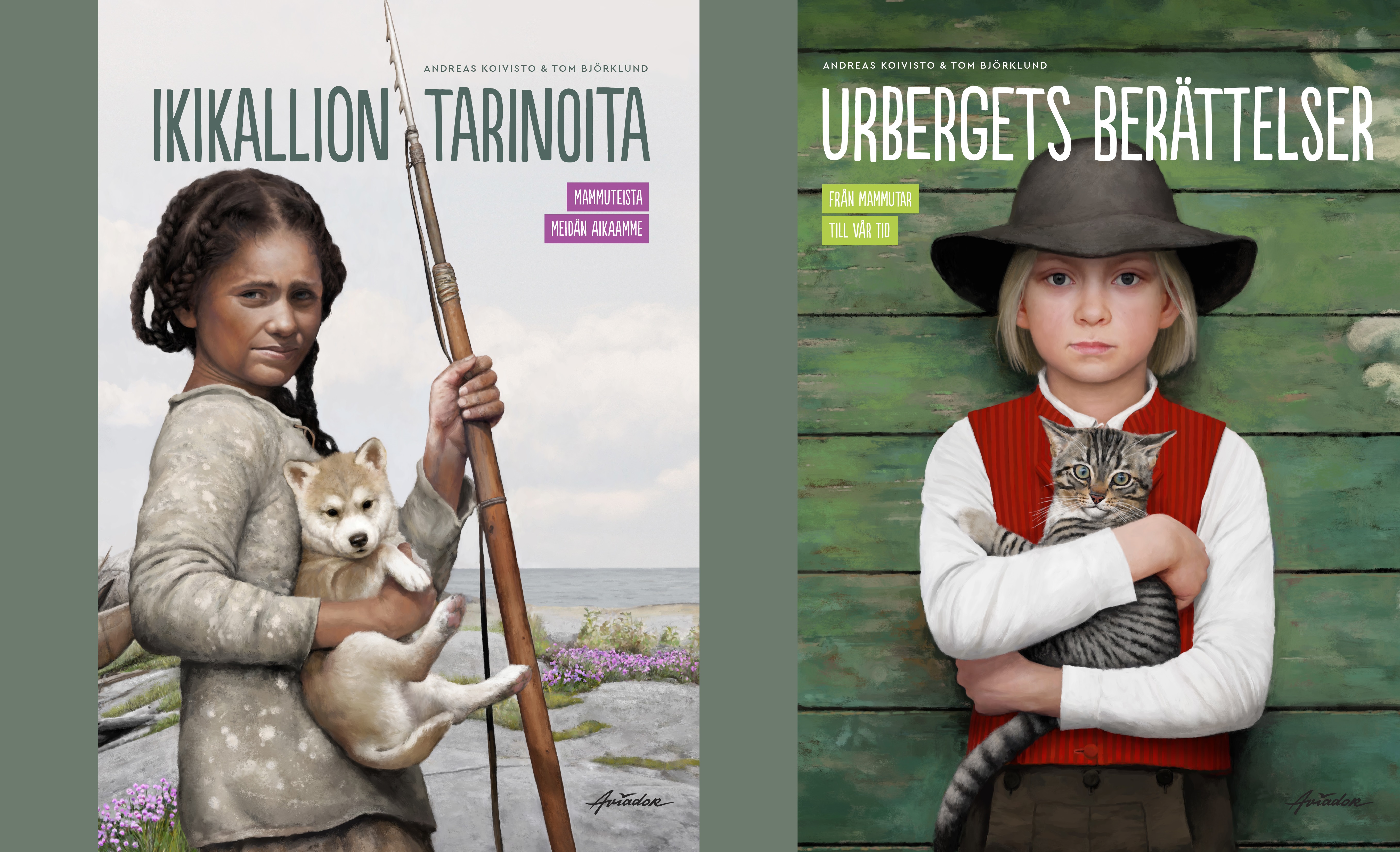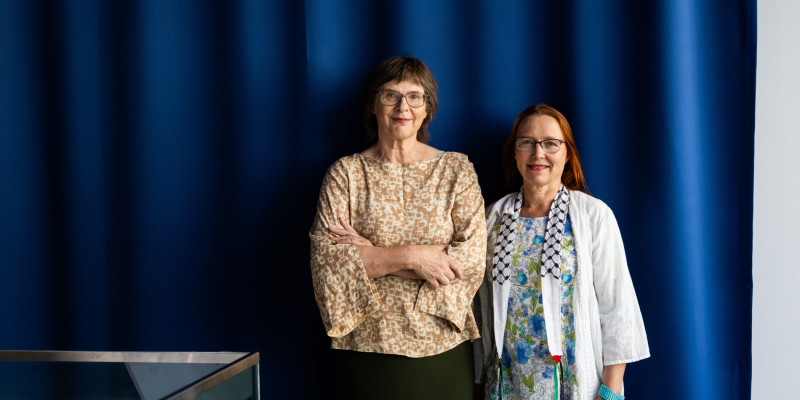
Children show great interest in ancient times. Andreas Koivisto and Tom Björklund received the State Award for Public Information for their work Ikikallion tarinoita.
Archaeologist Andreas Koivisto had noticed a clear gap. Children showed a keen interest in ancient times, but there was very little archaeological literature available to them. He filled the gap with visual artist Tom Björklund. The duo won the 2024 State Award for the Public Information with their work Ikikallion tarinoita - mammuteista meidän aikaamme (Eternal Rock - Stories from Mammoths to our time).
The book astonishes with its simplistic text and personal illustrations. How did you manage to avoid the factual overload typical of non-fiction and make the characters so relatable?
Andreas Koivisto: "This book contains an enormous amount of information. In fact, I gathered so much that I already have the framework for a non-fiction book for adults—only the final chapter is missing. I wanted to write a children’s book ever since I studied archaeology at the University of Helsinki. My first version was really boring, full of facts and dates. A lot of scientific articles have been published about archaeology, but they don’t really make sense to the average reader. I realized that for children, you have to write in a narrative format. I’ve had a lot of experience with children and have learned what works and what doesn’t."
Tom Björklund: "We started this project about eight years ago when Andreas contacted me. I’m interested in history and have illustrated a lot of prehistory. A book I illustrated, Mammutin aika. Elämää jääkaudella, won the State Award for Public Information in 2010. I studied art history at the University of Jyväskylä and later focused on art and crafts. I eventually graduated as a painter. I was supposed to become an abstract expressionist, but ended up as an illustrator. Liveliness comes from small details, like the way light and shadows fall on objects. Children are really good at noticing details. Early on in the project, I took a series of photos of Andreas’ family, with the girls playing the main roles in the book. They were so focused on their crafts that they sometimes forgot about the camera. Over the years, as the children grew, Andreas took and sent more photos as needed. I often use photos and the miniature models I craft as the basis for my drawings, just as artists have always done."
The main character of the book is the Stenkulla rock in Hakkila, Vantaa, which tells about its life from the Ice Age to the present day. Where did this idea come from?
Andreas: "From me. It’s about my birthplace, where I’ve lived since I was small. My grandparents’ house was right next to the rock, and we had just moved there. There used to be fields nearby, and when they were plowed, my grandfather would send me to look for Stone Age pottery shards. He had some himself. I found them incredibly fascinating, and that led me to start studying archaeology. Before my studies, I completed my civilian service at a daycare and later worked in daycare centers as well. It was hard to explain archaeology to children. However, the children's perspective is important in archaeology. For example, in the study of the Stone Age, you rarely see children, even though the harsh truth is that during that time, most people only had childhood. Very few made it to adulthood."
"Ikikallion tarinoita" is a flipbook with the same text in Finnish and Swedish, but the images partially change. The Finnish cover features a dark-skinned girl, while the Swedish cover shows a light-skinned boy. Were the original inhabitants of Vantaa dark-skinned?
Tom: "Based on research, that can be inferred. International ancient genetics research had a breakthrough in the 2010s. It showed that during the Mesolithic period, or the Stone Age, dark-skinned people lived in the Baltic region and Scandinavia, and it’s very likely that they also migrated to Finland. Over time, light skin became more common. We were fortunate that the book wasn’t finished before this breakthrough, as the new research would have immediately made it outdated. I might have depicted the girl’s skin as lighter. From the beginning, we wanted the book to stand the test of time."
Andreas: "I work as an archaeologist at the Vantaa City Museum, and after the book was published, I wrote a small article for Vantaan Sanomat (local newspaper) about Vantaa’s history, mentioning that the first people to arrive in the Vantaa area were dark-skinned. This caused an uproar; many couldn’t accept it. Apparently, Tom and I have some sort of agenda—we're 'green-left communists' provoking societal polarization. I ended up on television and radio because of the controversy. Luckily, I didn’t have to handle all the commentary alone; I received great support from my fellow archaeologists."
Tom: "I warned Andreas about the backlash in advance. I had illustrated a similar image earlier for an article by Danish researchers, and I saw how the image spread among far-right circles in the United States. The researchers had to explain the situation. You can easily find that story online under the name Lola the Story. I could have depicted darker-skinned people in our book up until the Bronze Age, but there are too many uncertainties around that, as by then the eastern hunter-gatherers already had light-skinned genes."

What significance does the book have for children in Vantaa and their parents?
Andreas: "I’ve visited elementary schools and kindergartens in Vantaa to talk about the city’s history, and I’ve noticed that it sparks a lot of interest. The kids get really excited. When I ask in class what an archaeologist does, and some tough kid says, 'they dig up poop,' I get to tell them about the world’s oldest fresh-frozen dog poop. The whole class goes completely silent. My favorite part in Ikikallion tarinoita is the poop, which appears at the beginning and the end of the book. I believe that while times change, humor stays the same. The dark-skinned girl on the cover doesn’t bother the schoolchildren. There are many students from different backgrounds in Vantaa’s classrooms."
Tom: "My favorite illustration is the spread depicting the famine years of the 1600s, with a bridge and a family walking along the road. It has a melancholy atmosphere and, in my opinion, an abstract color composition. Depicting that bridge was a huge effort; I had to research many different options."
Andreas: "This year, Vantaa is celebrating its 50th anniversary. Many residents are what you’d call newcomers and don’t have a strong connection to the area. It’s hard for parents to tell their children about local places and events. With this book, they can show what their home area is like. The book helps both new and old residents of Vantaa feel more rooted in their community."
Tom: "We’ve aimed to get as close to the truth as possible. The ultimate truth will never be fully reached, but every bit of research brings us one step closer. We made this book at just the right time. It won’t become outdated anytime soon."
The Ministry of Education and Culture annually awards the State Awards for Public Information based on the recommendation of the Committee for Public Information (TJNK). The award is the nation’s highest honor for outstanding public dissemination of knowledge.
Read more about the 2024 awards here.
Original text in Finnish: Helen Partti
English translation: Henriikka Mustajoki
Photo: Usva Torkki
Book covers: Tom Björklund


